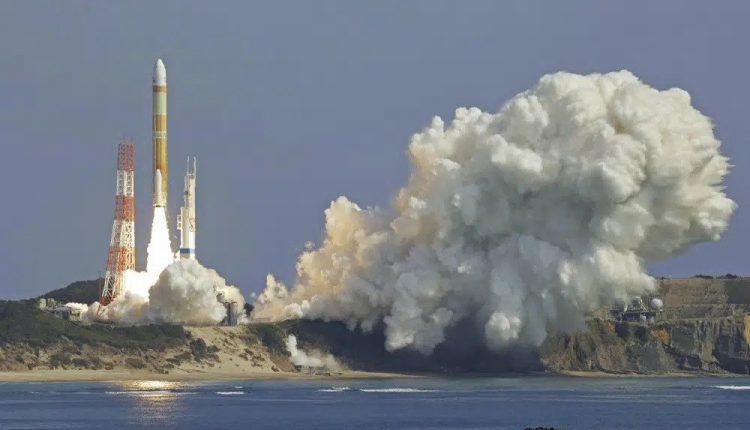New Japanese rocket is destroyed during first test flight to space
By Michael Roston
TOKYO – The Japanese space agency said Tuesday (7) that the country’s newest rocket had failed minutes into its first demonstration flight, a technological setback as the country tries to build up its capabilities in space.
The rocket, the H3, was uncrewed but carried a satellite for observing the earth. The H3 is intended to serve as the country’s flagship vehicle for sending satellites to orbit and beyond. While not a permanent complication for Japan’s space program, the loss means it will need to build another H3 before a second test.
The H3 rocket, which is about 200 feet long, lifted off from the Tanegashima Space Centre in southern Japan Tuesday morning. A live video stream provided by JAXA, the Japanese space agency, captured the rocket as it took off on schedule under a bright sun, its two side boosters lofting it toward the sky before dropping off minutes into the flight. The larger main engine then carried the rocket to space.
Video taken in space briefly showed the vehicle’s first stage dropping away from the second stage, which is built to push the mission’s cargo into a safe orbit around the planet. But minutes later, an announcer on the video stream said that officials on the ground were unable to confirm that the rocket’s second stage had started firing.
About 15 minutes after the launch, the officials confirmed that the mission had been lost.
“A destruct command has been transmitted to H3 because there was no possibility of achieving the mission,” the announcer said on the webcast.
The rocket’s second stage was deliberately destroyed, most likely to ensure that its wreckage landed in an area of the ocean where it would not threaten people or property. That also meant that the rocket’s payload, the Advanced Land Observation Satellite-3, was obliterated.
East Asian countries have been expanding their space programs rapidly in recent years. In November, China completed its first fully functional space station, Tiangong, which is to be continuously occupied by astronauts. South Korea has also pursued spaceflight, flying its first home-grown orbital rocket, Nuri, in June, and launching its first moon mission on an American rocket in August.
Japan has a robust space program that reaches back decades. It is part of the global partnership that manages the International Space Station, and its astronauts routinely serve aboard the orbital outpost. Its Hayabusa2 mission returned samples from the asteroid Ryugu to Earth in late 2020, and they are now being studied by scientists. A number of smaller Japanese companies have joined the space sector, with one, Ispace, set to attempt what could be the first private moon landing in April.
Japan aims to build its own rockets and maintain an independent ability to carry payloads to orbit. The country’s current active rocket, H-IIA, is scheduled to complete additional flights in the coming year. The H3 rocket, built by Mitsubishi Heavy Industries, is meant to replace that rocket and bolster Japan’s domestic spaceflight capabilities.
Failure of new rockets on their first flight is common. In January, an American company, ABL Space Systems, lost the company’s first rocket shortly after liftoff from a launch site in Alaska. A Chinese company, Landspace, lost its Zhuque-2 rocket on its first orbital flight in December.
While the Japanese H3 rocket failed Tuesday, another new rocket will be tested this week in the United States. On Wednesday (8), the American company Relativity Space will attempt the first launch of its Terran 1 rocket from Cape Canaveral, Florida.
-New York Times



Comments are closed, but trackbacks and pingbacks are open.